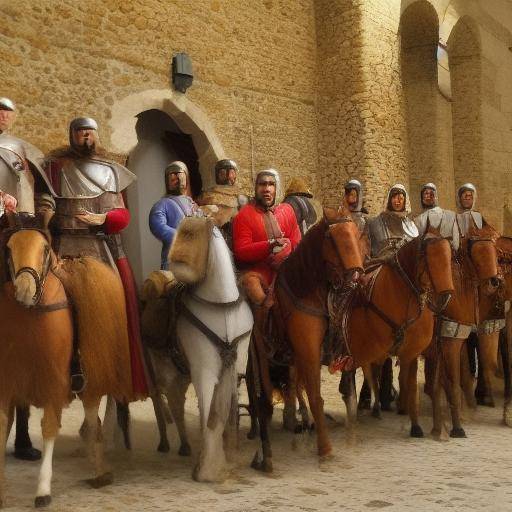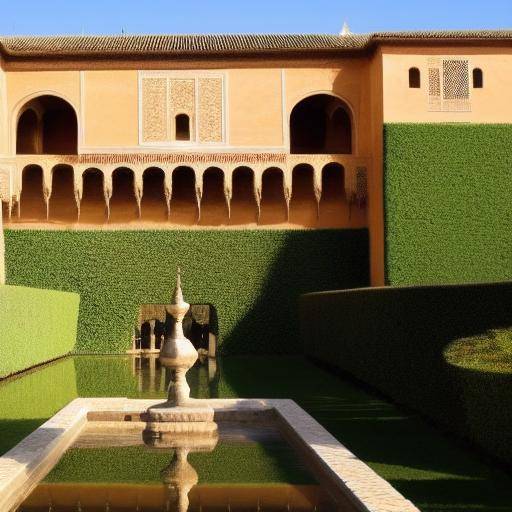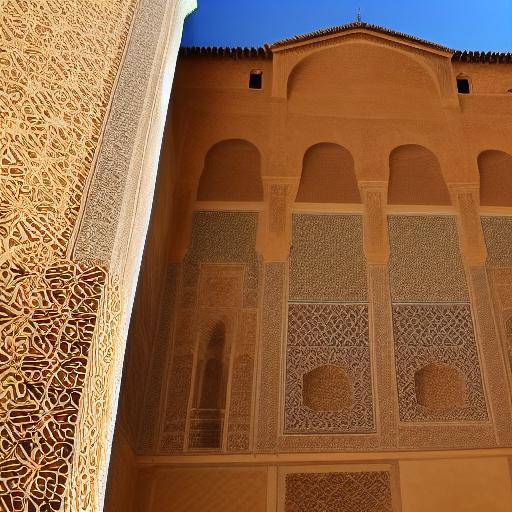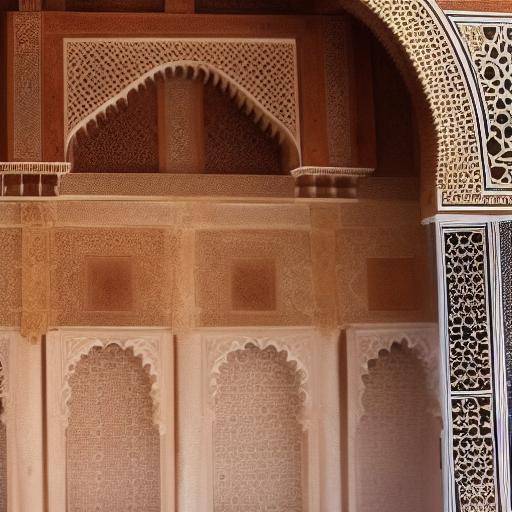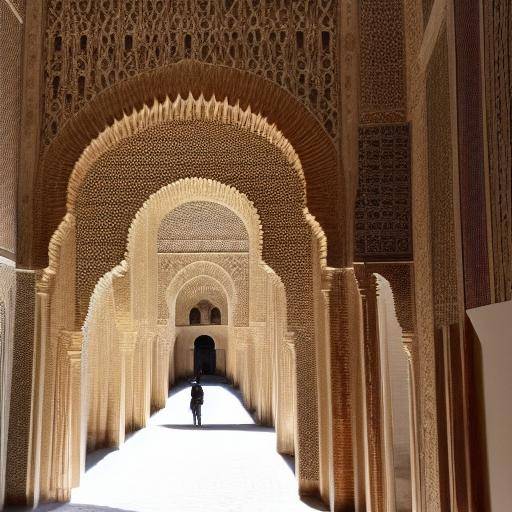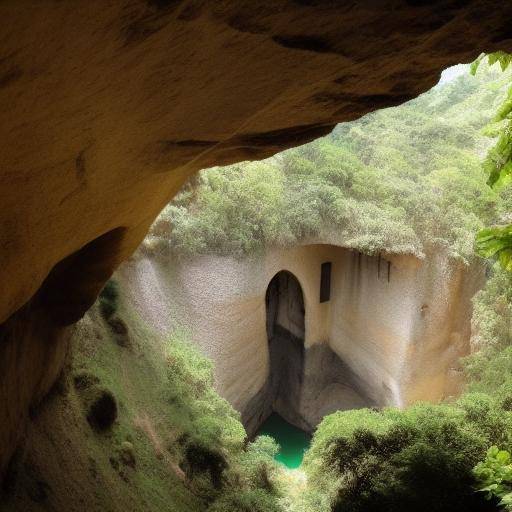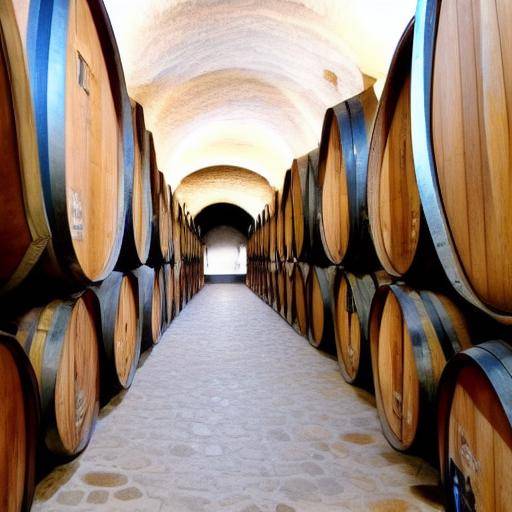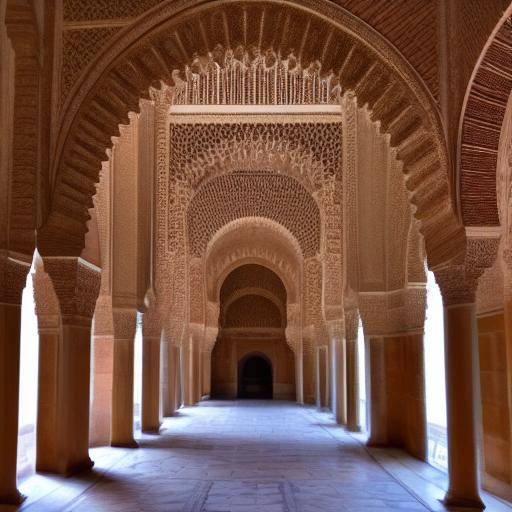
Granada is a city that breathes history and culture in every corner. Its most precious jewel, the Alhambra, is an architectural wonder and a living will of Islamic influence in Spain. In this article, I will take you through a journey of discovery for the secrets of the Alhambra and its legacy in Islamic and Spanish culture. From its historical origins to its impact on contemporary Spain, we will explore in detail the richness of this place and its cultural and historical importance. Prepare to immerse yourself in the fascinating history of the Alhambra and Granada.
Introduction
A view of the Alhambra and Granada
The Alhambra, declared a World Heritage Site by UNESCO, is a palatial and fortress complex that embodies the rich heritage of Islamic culture in Spain. Located in Granada, this architectural masterpiece is a testimony of the coexistence between Muslim, Jewish and Christian cultures throughout the history of Spain. In this article, you will immerse yourself in the secrets of the Alhambra and discover its influence in the Islamic and Spanish culture.
What you will learn
Throughout this journey, we will explore the history and cultural legacy of the Alhambra, analyze its influence in Spanish culture and discover how this magnificent monument continues to leave its mark today. From its origins to its impact on contemporary society, this article will give you a deep understanding of the Alhambra and its legacy in Granada and Spain.
History and Background
Origins of the Alhambra
The Alhambra, whose name comes from the Arabic "Al-Qala'a al-Hamra" (The Red Fortress), was built in the 13th century by order of Sultan Muhammad I of Granada. This impressive palatial complex was conceived as a fortress and royal residence, reflecting the splendor of the Nasrid kingdom.
Historical and Evolution Importance
The Alhambra not only represented the splendor of the Nasrid kingdom, but also witnessed the transition of power on the Iberian peninsula. After the Reconquest in 1492, the Catholic Kings transformed some parts of the complex to adapt them to their lifestyle and military uses, marking a turning point in their history.
Developments and Reflection Points
Over the centuries, the Alhambra has undergone various transformations and has been the scene of historical events that have shaped its legacy. The intervention of Carlos V, who added a Renaissance palace in the heart of the Alhambra, and the restoration efforts of the nineteenth century, have contributed to the current configuration of the site.
Anecdotes and Historical Cases
During its glorious history, the Alhambra has witnessed countless anecdotes and events, such as the intrigues of the Nasrid court, the visit of 19th-century romantic writers such as Washington Irving, who popularized the Alhambra in its work "Cuentos de la Alhambra", and the legends that surround its majestic palaces and gardens.
Analysis in Deep
Benefits and Challenges
The Alhambra, as a representative of Islamic architecture and art, has provided valuable benefits to culture and tourism in Spain. However, it also faces significant challenges, such as preserving its structure and managing the large number of tourists who visit it every year.
Real Statistics and Examples
Specific figures and examples reveal the magnitude of the impact of the Alhambra on the culture and economy of Granada. For example, in 2019, more than 2.7 million people visited the Alhambra, generating significant income for the region and highlighting its importance as a tourist destination.
Perspectives and Diverse Reviews
Different expert voices offer different perspectives on the influence of the Alhambra in Spanish and Islamic culture. Historians highlight their value as a symbol of sophistication and Islamic art, while conservationists underline the need to protect and preserve this heritage for future generations.
Exhaustive examination
Practices and Best Practices
The practical applications of the principles and architectural styles of the Alhambra have influenced the design and construction of contemporary buildings. Sustainable design techniques and conservation approaches adopted at the Alhambra serve as models for the preservation of other historical sites.
Opinions of Experts and Future Perspectives
Recognized experts in architecture and cultural heritage glimpse new perspectives and challenges in the conservation of the Alhambra. Modern conservation and restoration techniques, together with digital technology, are transforming the way these historical monuments are preserved and presented.
Comparison of Methods and Approaches
The comparison of the methods and approaches used in the preservation and promotion of the Alhambra in relation to other global historical sites reveals effective practices that can be adopted to improve the management and conservation of such heritage.
Comparative analysis
Similarities, Differences and Potential Synergies
When examining the Alhambra, Granada and Spain as a whole, surprising similarities, significant differences and potential synergies in their cultural and architectural traditions are revealed. Compare the Alhambra with other Islamic palaces and fortresses, such as the Topkapi Palace in Istanbul, allows you to appreciate its unique and common features.
Examples Detailed and Relevant Scenarios
From architecture to cultural traditions, detailed examples and relevant scenarios provide an integral view of how the Alhambra and its legacy influence the cultural identity of Granada and Spain.
Practical Tips and Accessible Tips
Practical Tips
- When visiting the Alhambra, book your tickets in advance to avoid long rows.
- It devotes time to explore the different palaces and gardens to appreciate the beauty and architectural excellence.
- Use comfortable footwear, as there are many areas to walk and stairs to climb.
Accessible Tips
- Plan your visit with enough time to fully enjoy the experience.
- Explore the less well-known corners of the Alhambra to discover fascinating details.
- Take part in guided tours to get a deeper understanding of the history and architecture of the place.
Perceptions of Industry and Expert Reviews
Implications for the Future
Future implications and projections derived from expert visions provide a valuable perspective on the conservation and promotion of cultural tourism in the Alhambra. The adoption of digital technologies, such as increased reality, can improve the experience of visitors and offer new ways to interact with history.
Industry and Prognostic Trends
The emerging trends in the cultural and tourist spheres shape the future of the Alhambra as a centre for cultural education and conservation. Sustainability and inclusion stand out as key factors for the future development of this historic site.
Case Studies and Real Life Applications
Results and Lessons Learned
The results and lessons learned from real cases illustrate the depth and extent of the influence of the Alhambra in the architecture and preservation of cultural heritage. Case studies of recent restorations demonstrate the effectiveness of modern conservation techniques and the importance of international collaboration.
Future Trends and Predictions
Emerging trends
The emerging trends in the conservation of cultural heritage and the promotion of sustainable tourism point to a future in which the Alhambra will remain a benchmark in the preservation and cultural education.
Current Data and Expert Reviews
The predictions based on current data backed by expert opinions show a future in which the Alhambra will not only remain a cultural treasure, but will also become a model for sustainable conservation and the promotion of responsible tourism.
Conclusion
In conclusion, the Alhambra represents an extraordinary cultural legacy that continues to impact generations of visitors and scholars. Through its magnificent legacy, the Alhambra not only enriches the cultural identity of Granada and Spain, but also offers valuable lessons on coexistence and respect among different cultures.
Summary and Strengthening of Information
The Alhambra, through its magnificent legacy, continues to impact culture and history, serving as a constant reminder of the rich Islamic heritage in Spain and its lasting influence on architecture and arts.
Declaration of Closure
We hope that this journey through the Alhambra and its legacy in Islamic and Spanish culture will awaken your curiosity and desire to explore further this magnificent architectural wonder in person. The Alhambra and Granada await you with their secrets and fascinating history.
Frequently asked questions
What is the best time of the year to visit the Alhambra?
The spring and autumn offer ideal weather conditions to visit the Alhambra, avoiding the summer crowds and the winter cold.
How is the experience of visiting the Alhambra at night?
The Alhambra at night offers a unique and magical atmosphere, with the lighting highlighting the beauty of its monuments and gardens.
How long does it take to visit the Alhambra?
It is recommended to spend at least half a day to explore the Alhambra calmly and appreciate all its details.
What cultural activities and events are held in the Alhambra?
The Alhambra offers a variety of cultural activities, from concerts to exhibitions, which enrich the experience of visitors.
What is the impact of the Alhambra on the local economy of Granada?
The Alhambra is an important economic engine in the region, attracting tourism and generating employment opportunities in the sector.
How is the Alhambra preserved and preserved for future generations?
The Alhambra is subjected to rigorous conservation and restoration programs, ensuring its integrity for future generations.
Enriching culture and history, the Alhambra and Granada remain witness to a glorious past and symbols of coexistence between cultures. As we explore their influence in the current context, it is clear that their legacy will endure over time, enriching the emotional and spiritual heritage of Spain.
We hope that this tour has awakened in you the curiosity and desire to explore further this magnificent architectural wonder in person!

